Abstract
Thirsty rats licked two metal tubes: a water tube paired with another water tube, with saccharin, or with a dry tube. For each pair, a multipoint baseline function was measured by offering free access to one tube throughout each session, and free or restricted access to the other. The three resulting baseline functions showed the members of each pair to be mutual substitutes: When access to either tube was restricted, the rats made more licks at the other. A linear function identified the two water tubes as perfect substitutes. Convex functions identified the members of the saccharin-water and the dry-water pair as imperfect substitutes. Each pair was also tested under several reciprocal fixed-ratio schedules that required instrumental licking of either tube for contingent access to the other. The resulting schedule functions showed the members of each pair to be perfect substitutes: Water licks decreased linearly as licks at the other water tube, the saccharin, or the dry tube increased, in agreement with a conservation model of instrumental performance. Baseline and schedule functions, indistinguishable in the water-water pair, indicated a schedule facilitation of dry-tube licking in the dry-water pair and of water-tube licking in the saccharin-water pair.
Full text
PDF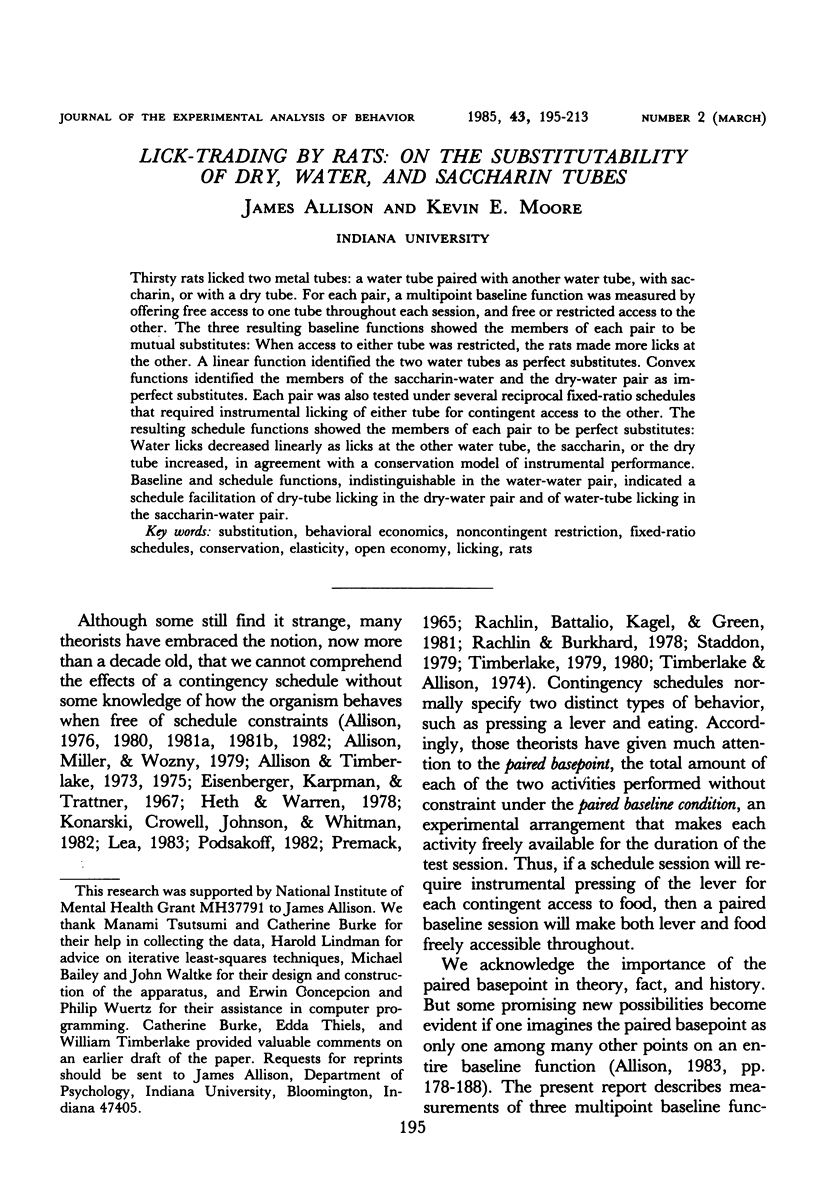
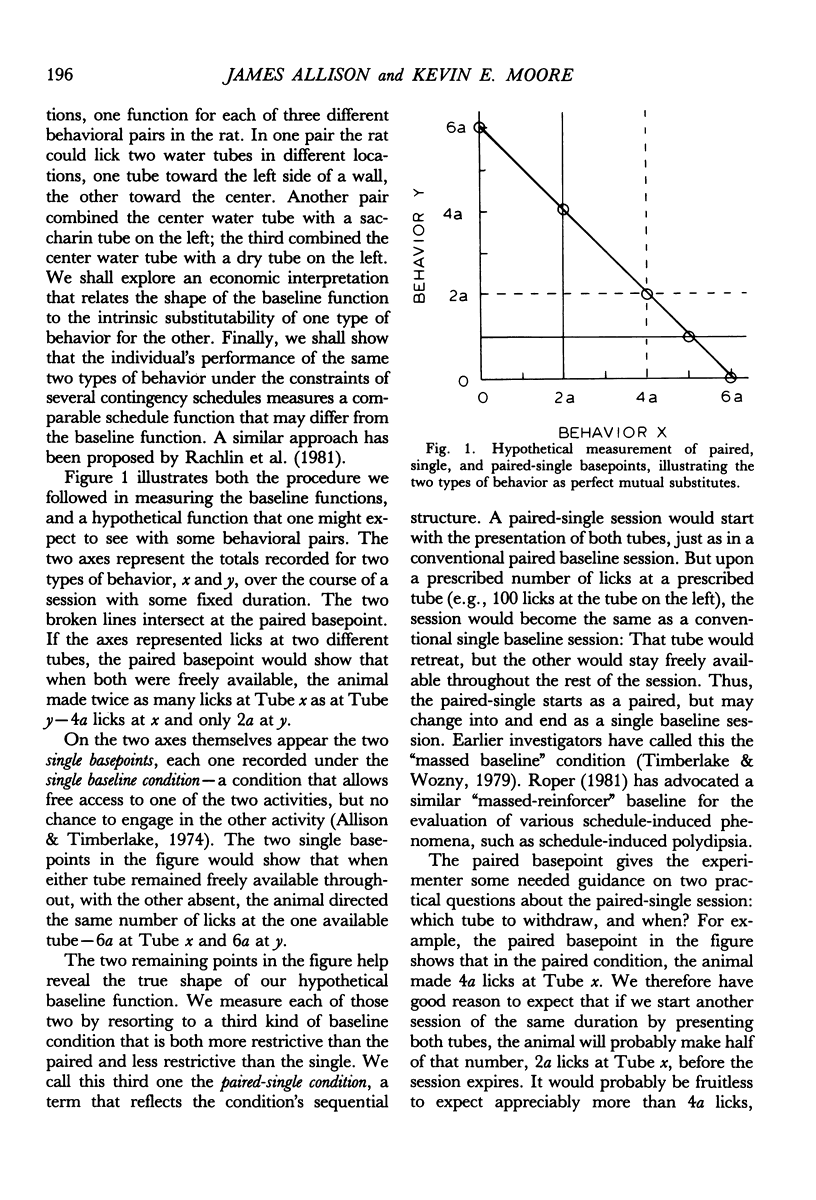
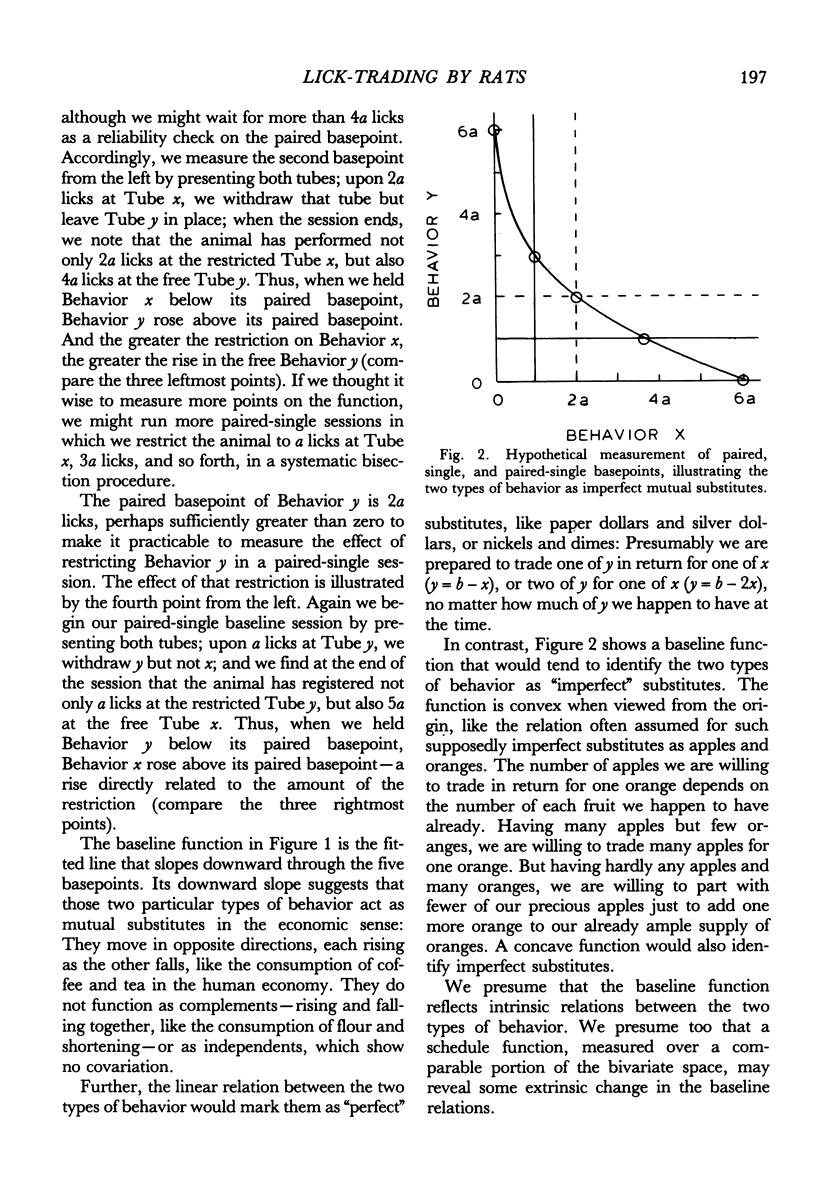
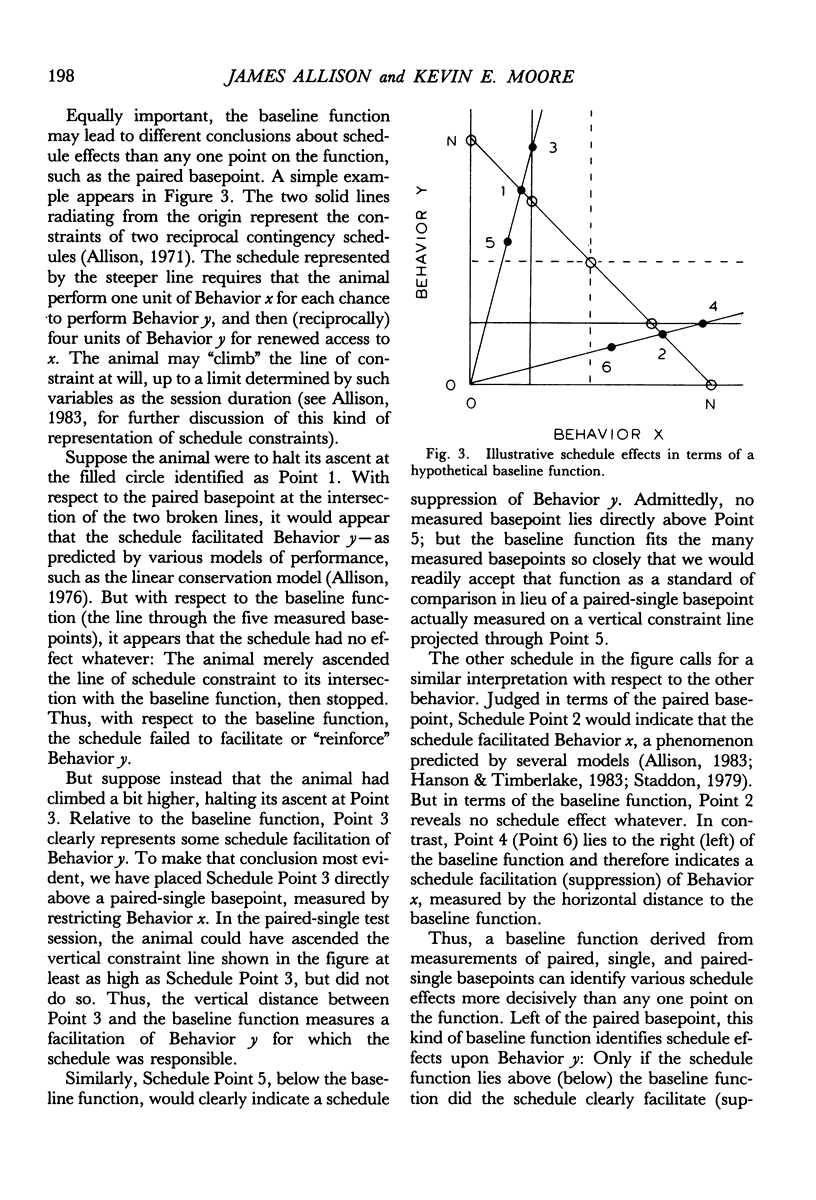
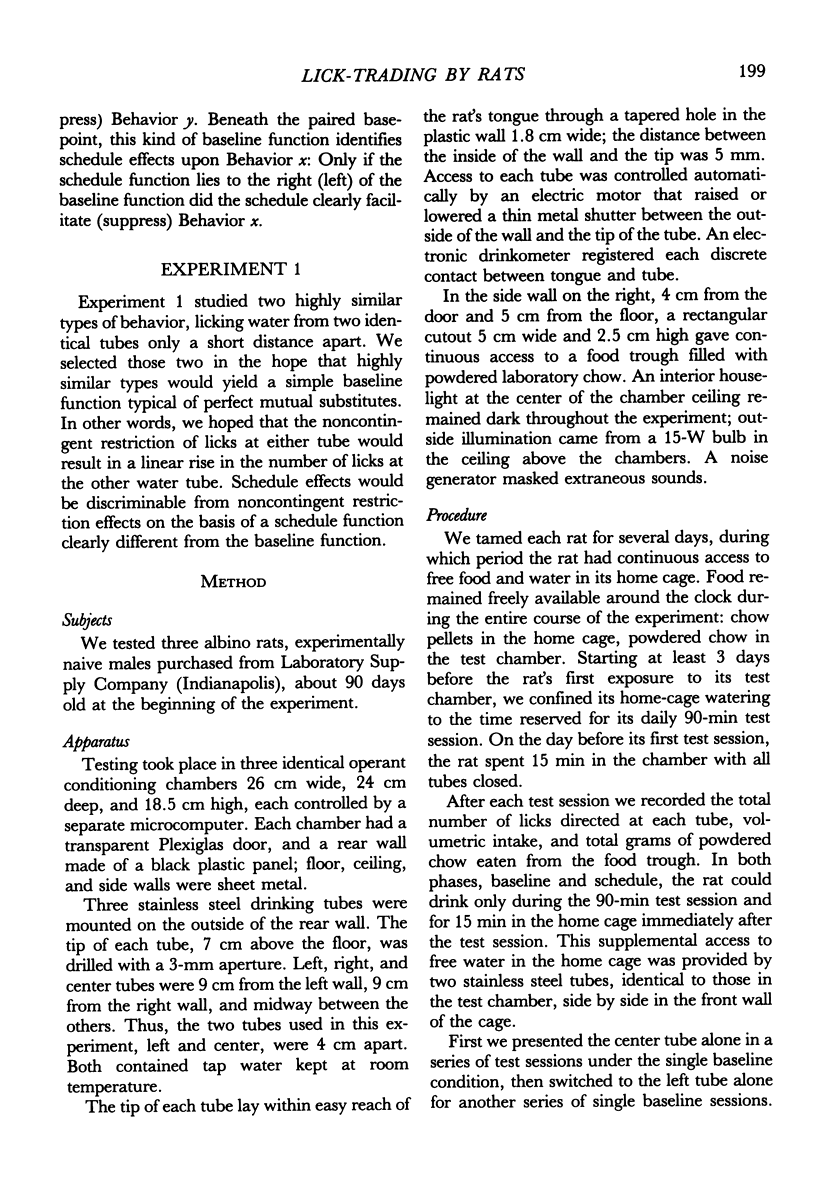
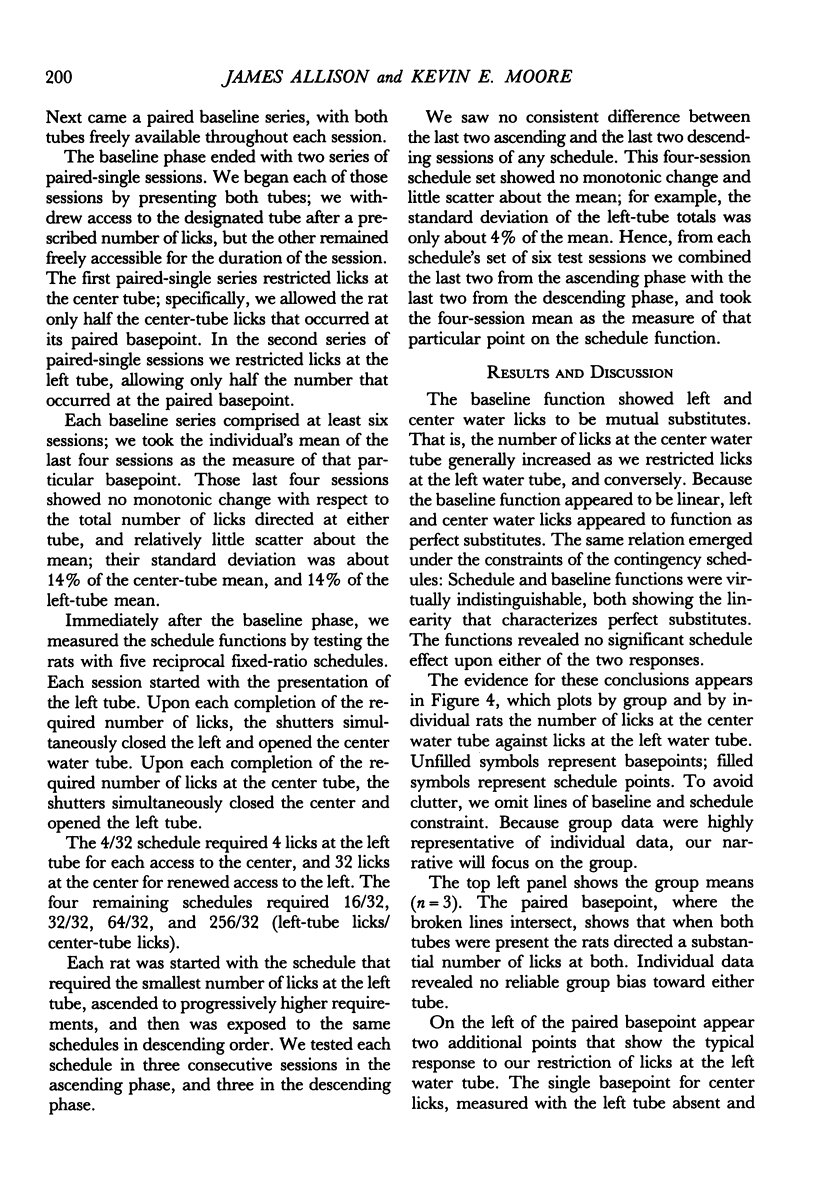
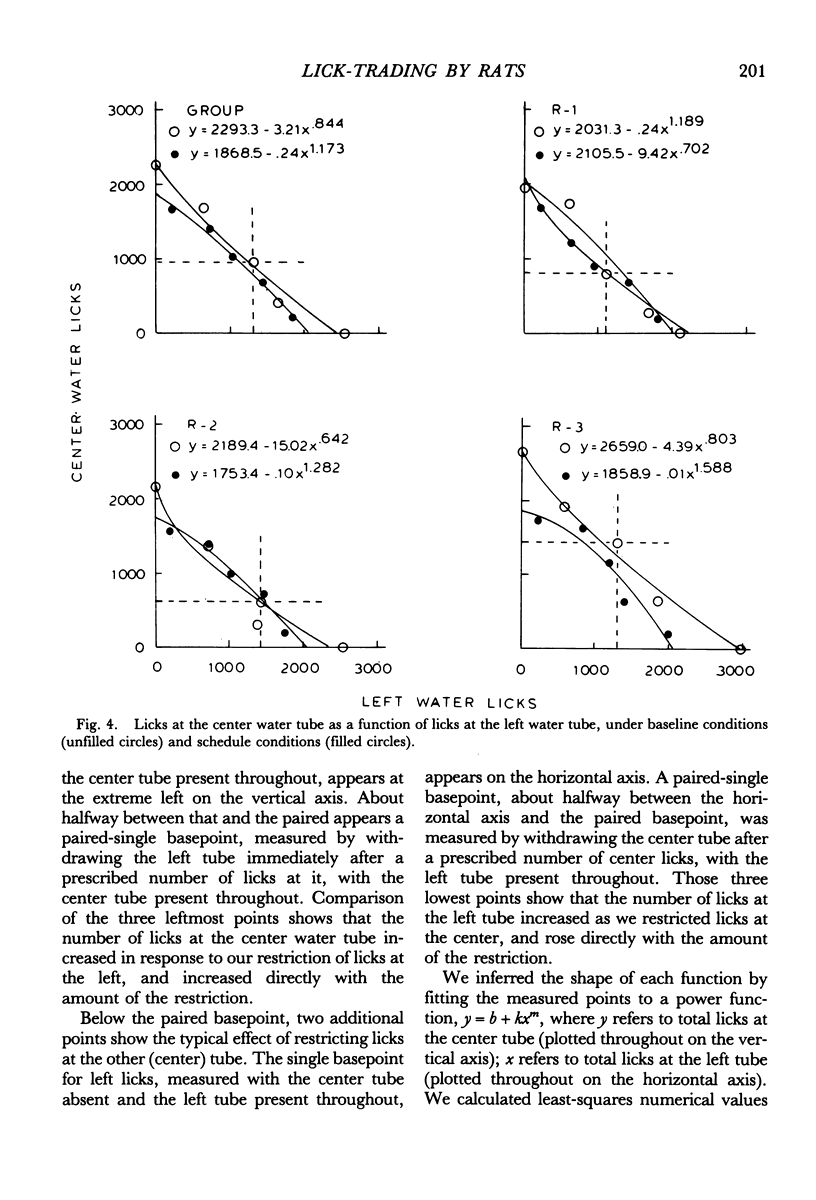
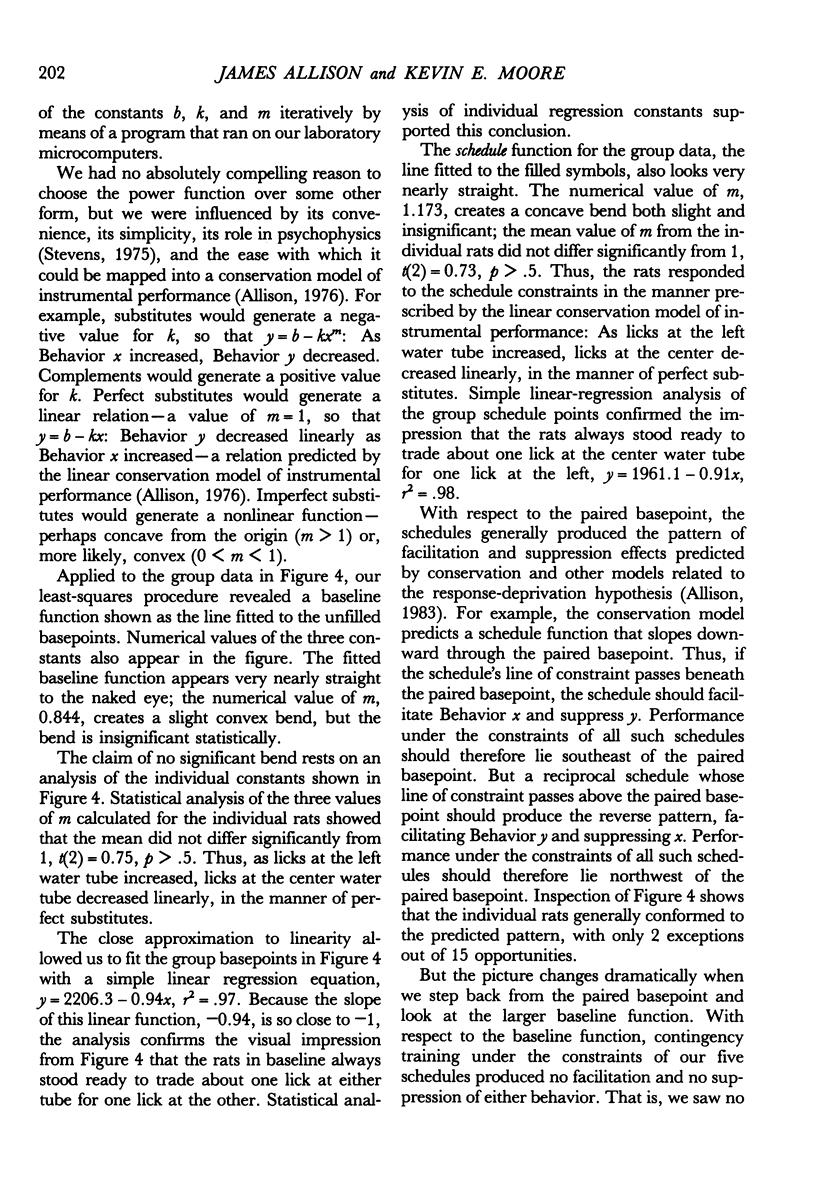
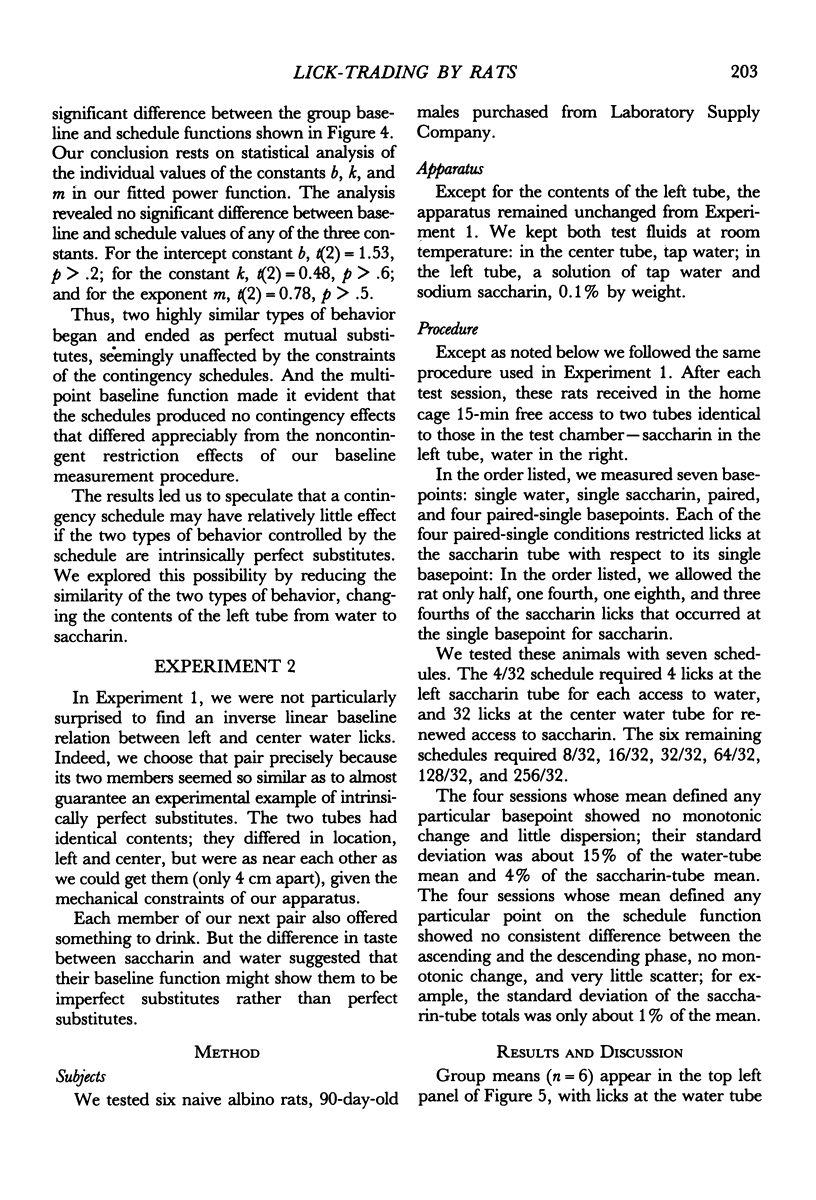
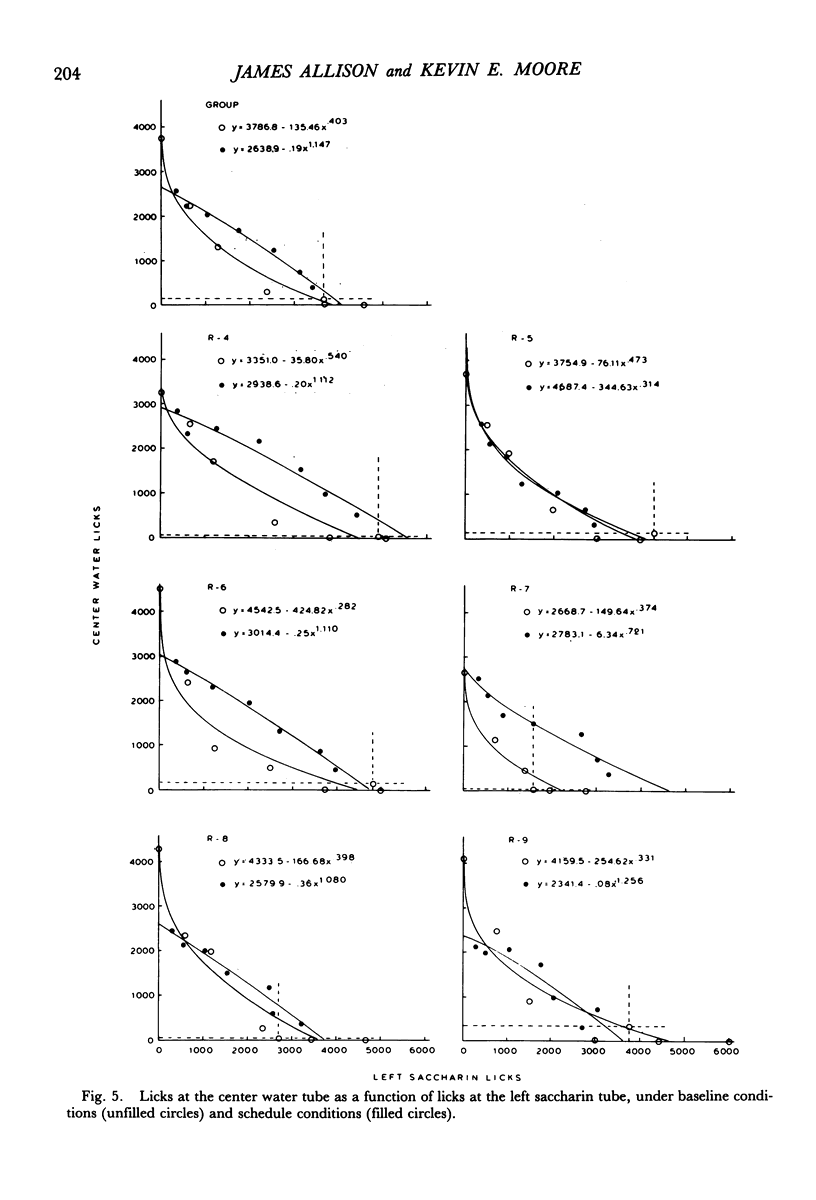
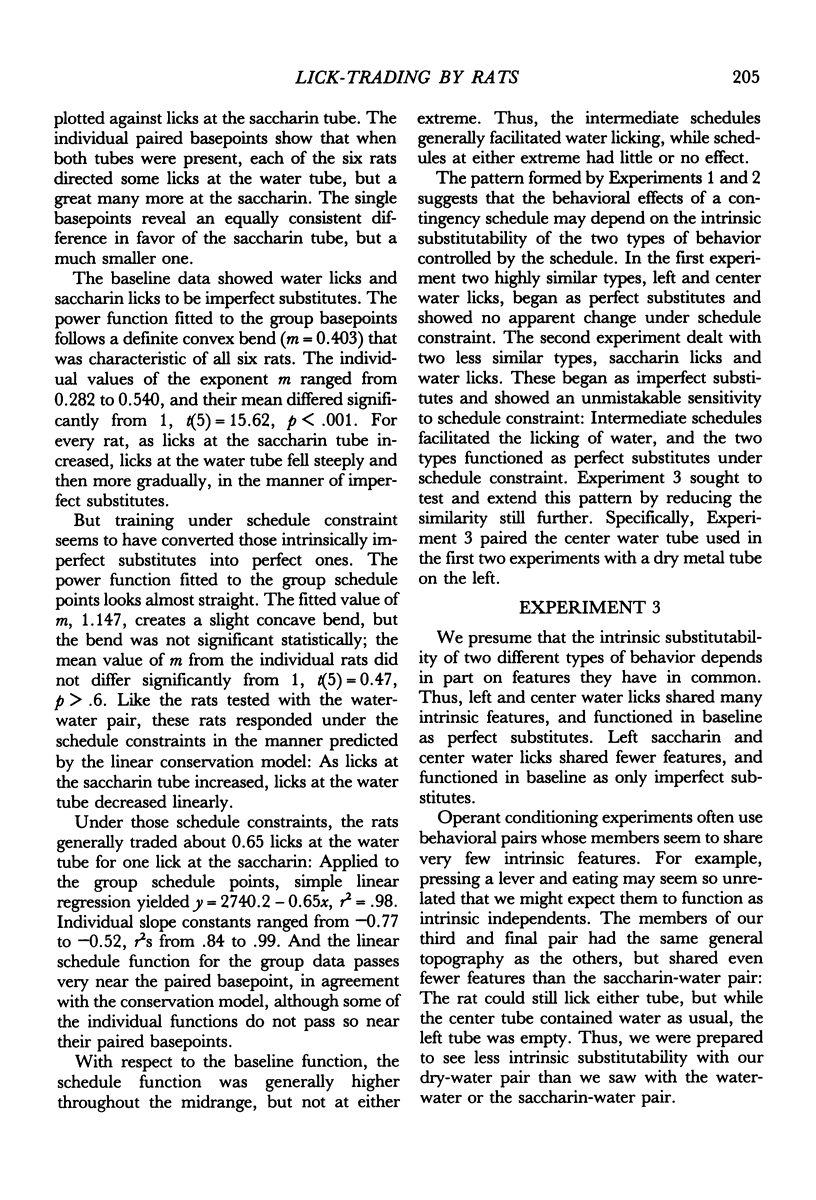
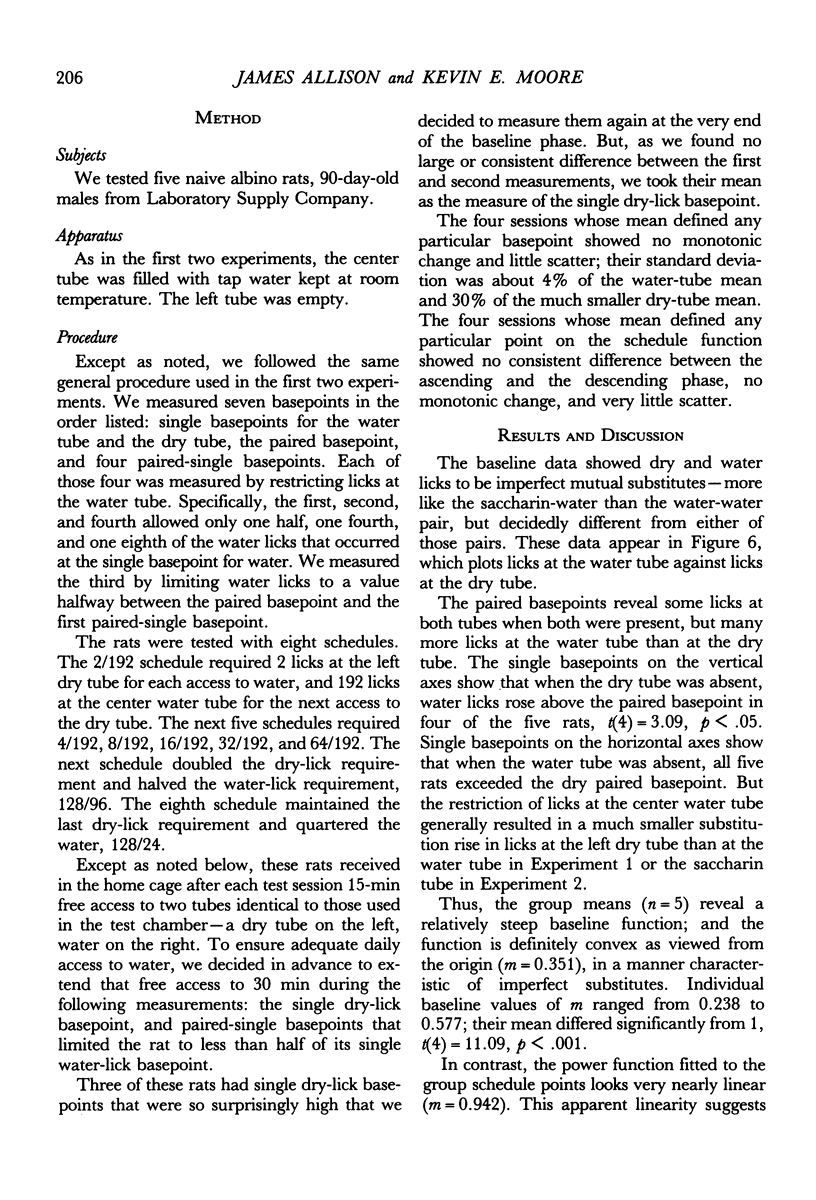

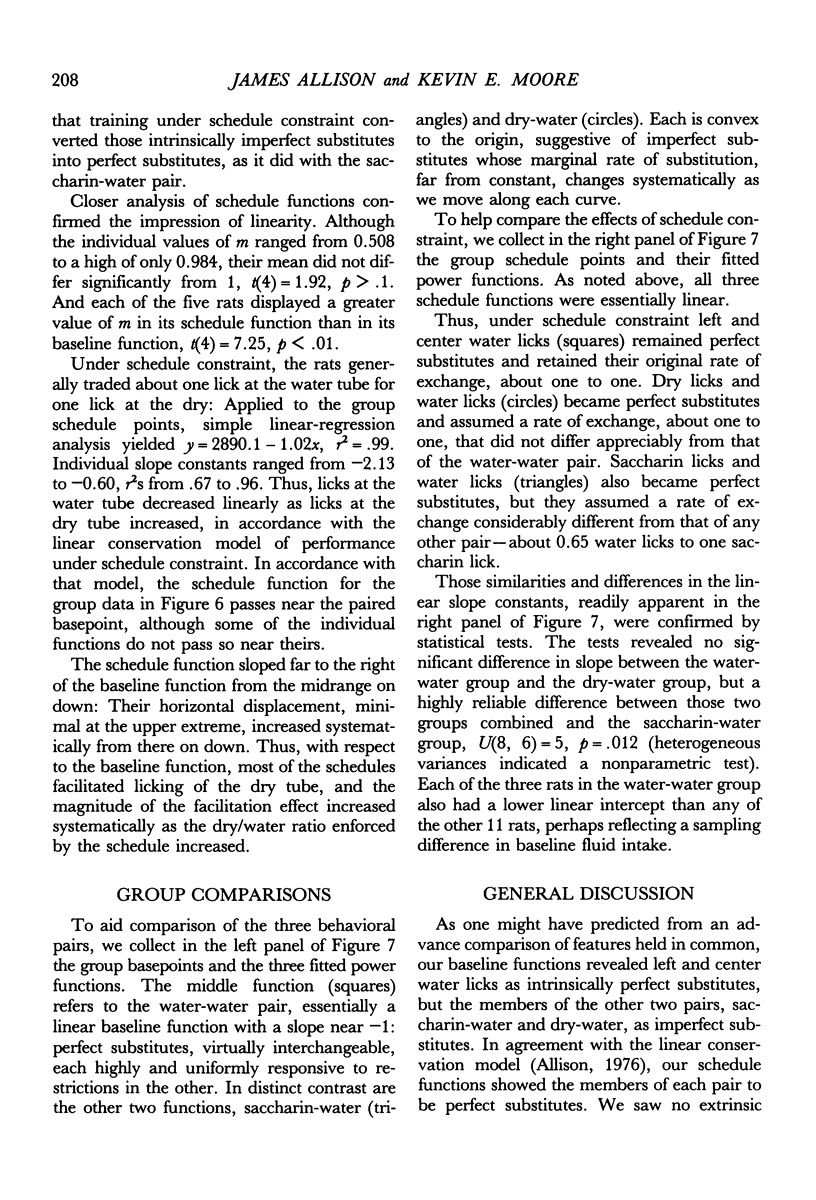
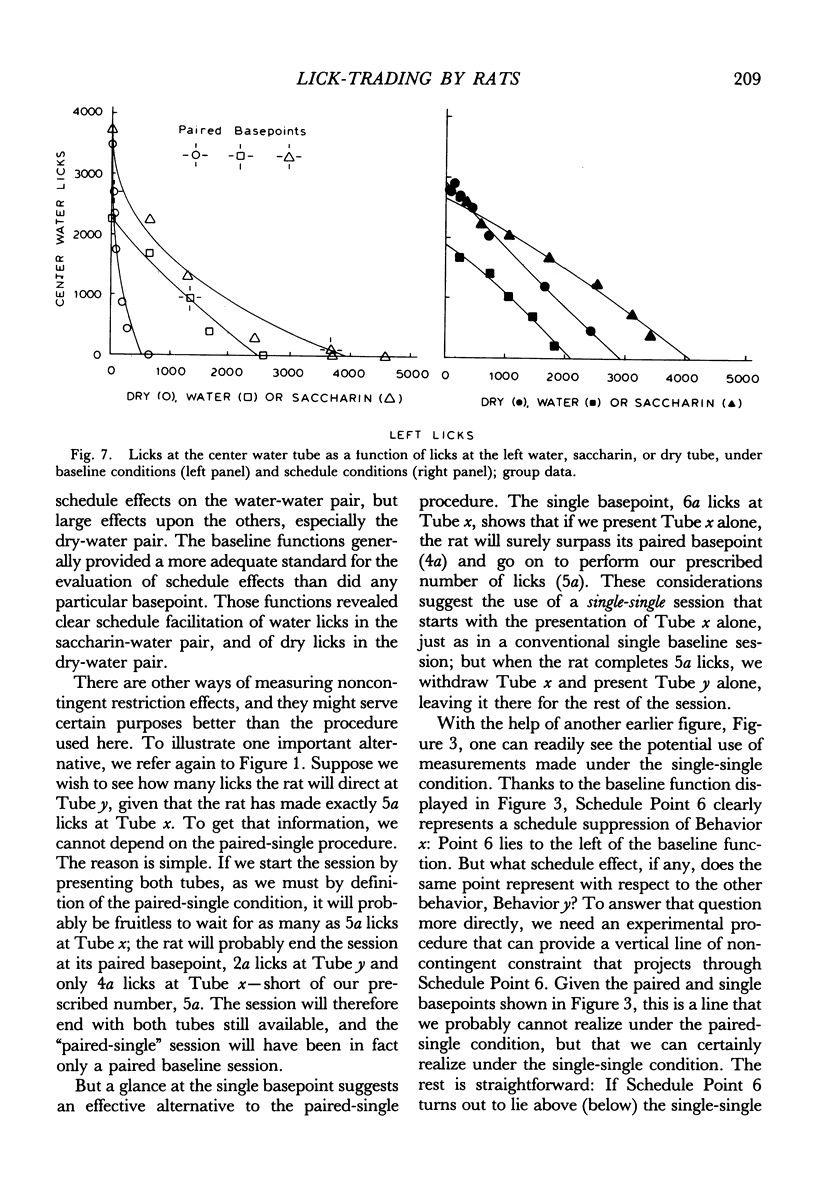
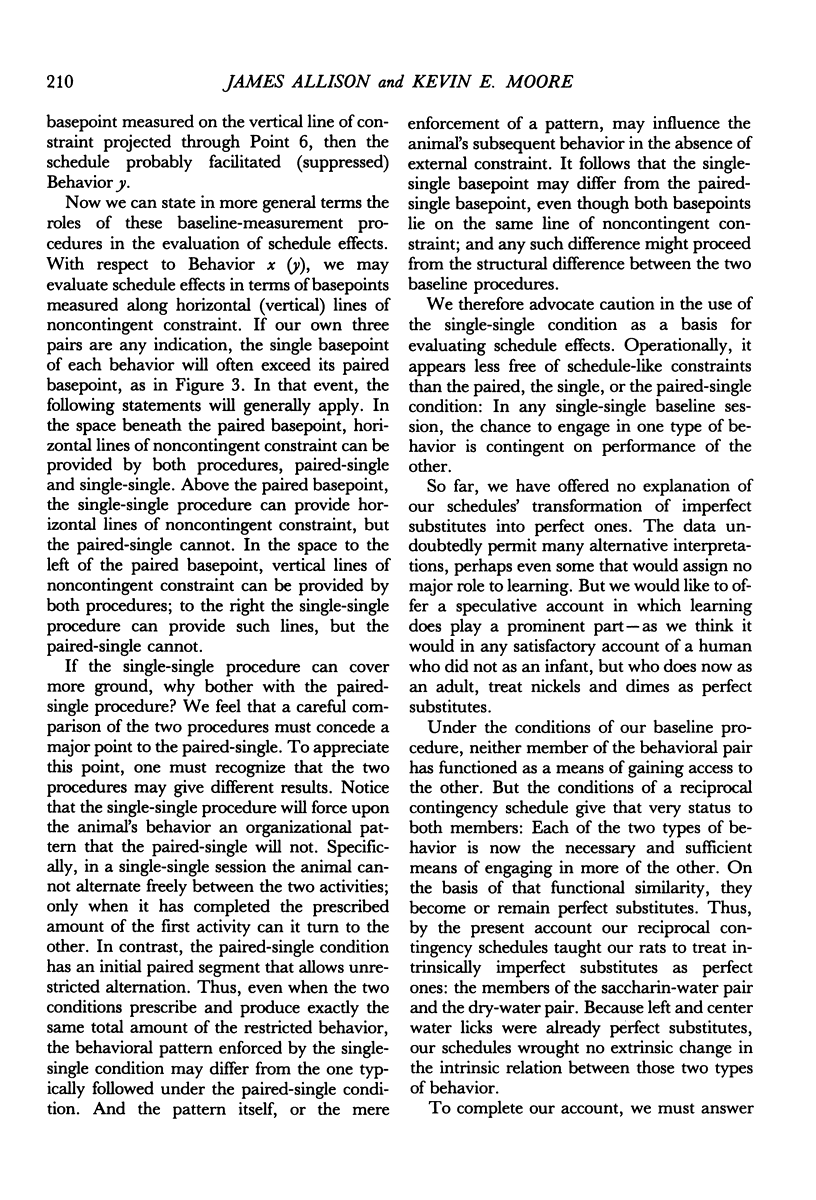
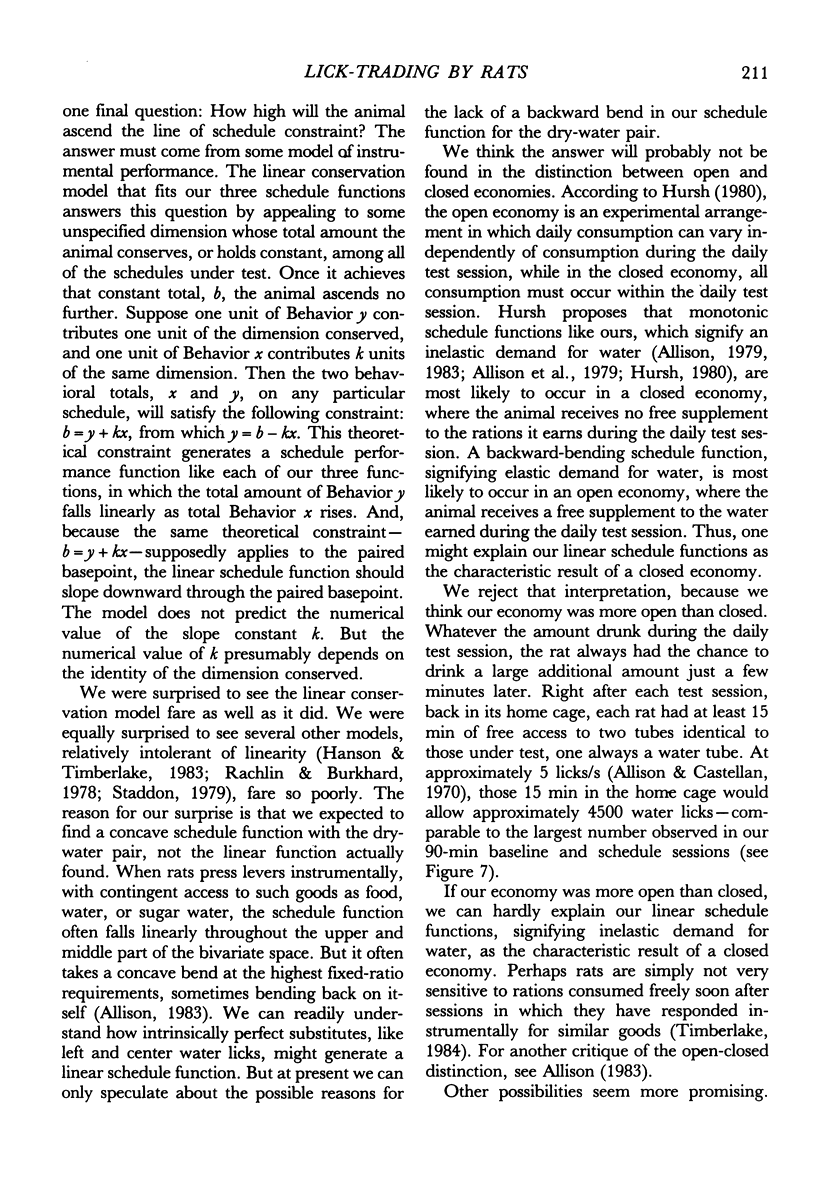
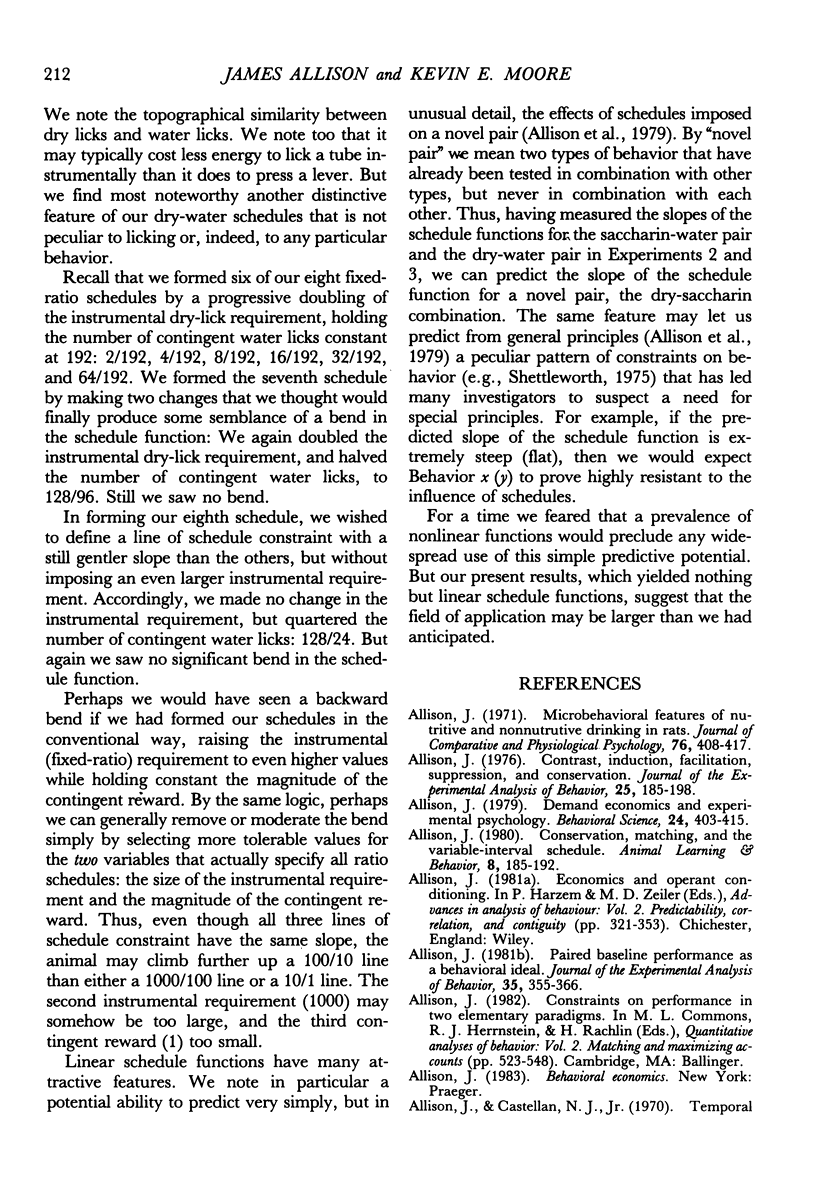
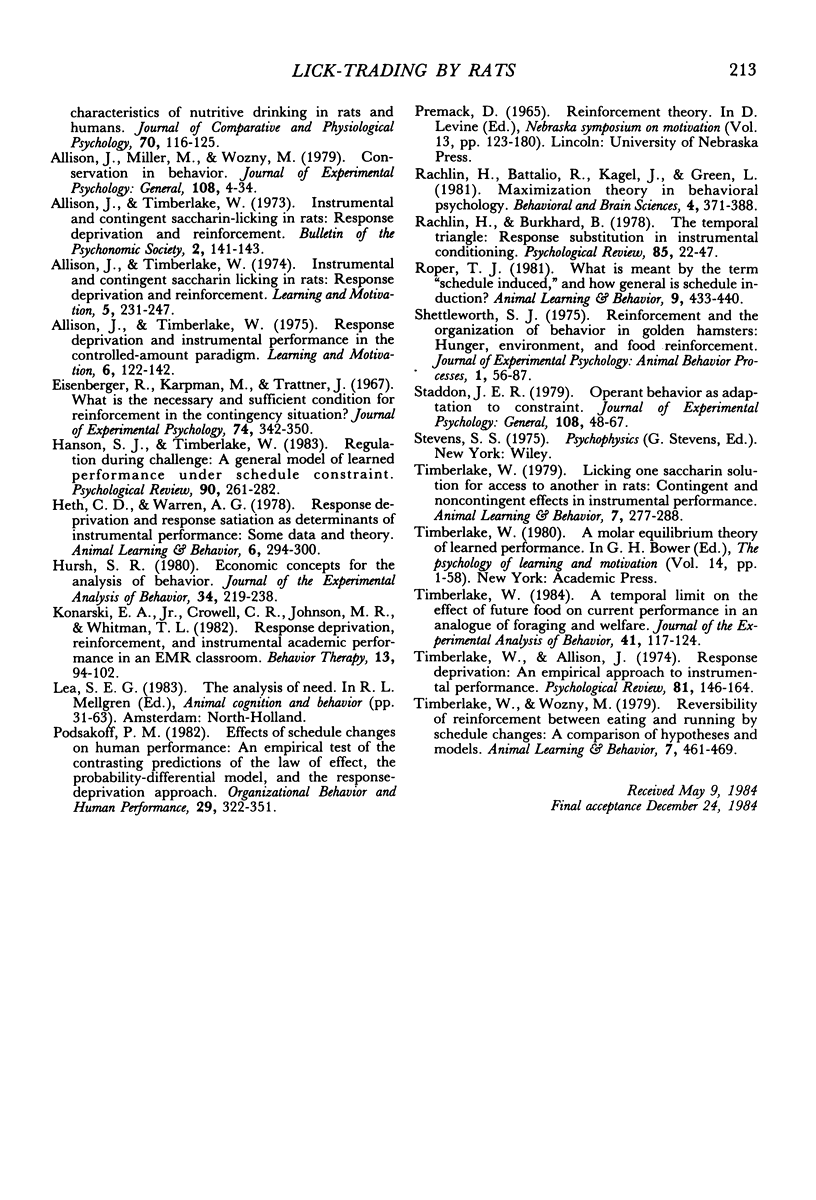
Selected References
These references are in PubMed. This may not be the complete list of references from this article.
- Allison J. Contrast, induction, facilitation, suppression, and conservation. J Exp Anal Behav. 1976 Mar;25(2):185–198. doi: 10.1901/jeab.1976.25-185. [DOI] [PMC free article] [PubMed] [Google Scholar]
- Allison J. Microbehavioral features of nutritive and nonnutritive drinking in rats. J Comp Physiol Psychol. 1971 Sep;76(3):408–417. doi: 10.1037/h0031388. [DOI] [PubMed] [Google Scholar]
- Allison J. Paired baseline performance as a behavioral ideal. J Exp Anal Behav. 1981 May;35(3):355–366. doi: 10.1901/jeab.1981.35-355. [DOI] [PMC free article] [PubMed] [Google Scholar]
- Eisenberger R., Karpman M., Trattner J. What is the necessary and sufficient condition for reinforcement in the contingency situation? J Exp Psychol. 1967 Jul;74(3):342–350. doi: 10.1037/h0024719. [DOI] [PubMed] [Google Scholar]
- Hursh S. R. Economic concepts for the analysis of behavior. J Exp Anal Behav. 1980 Sep;34(2):219–238. doi: 10.1901/jeab.1980.34-219. [DOI] [PMC free article] [PubMed] [Google Scholar]


